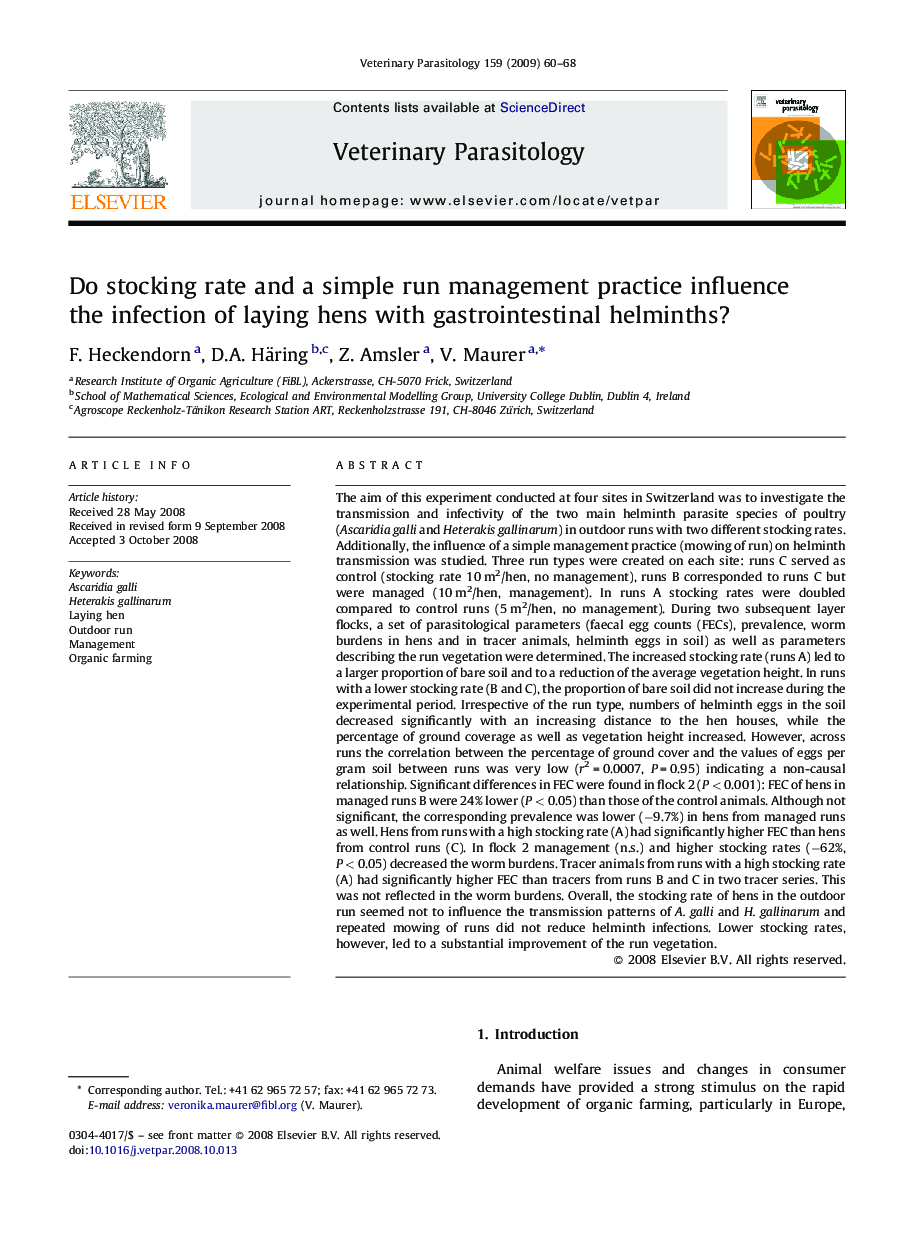| کد مقاله | کد نشریه | سال انتشار | مقاله انگلیسی | نسخه تمام متن |
|---|---|---|---|---|
| 2471433 | 1112536 | 2009 | 9 صفحه PDF | دانلود رایگان |

The aim of this experiment conducted at four sites in Switzerland was to investigate the transmission and infectivity of the two main helminth parasite species of poultry (Ascaridia galli and Heterakis gallinarum) in outdoor runs with two different stocking rates. Additionally, the influence of a simple management practice (mowing of run) on helminth transmission was studied. Three run types were created on each site: runs C served as control (stocking rate 10 m2/hen, no management), runs B corresponded to runs C but were managed (10 m2/hen, management). In runs A stocking rates were doubled compared to control runs (5 m2/hen, no management). During two subsequent layer flocks, a set of parasitological parameters (faecal egg counts (FECs), prevalence, worm burdens in hens and in tracer animals, helminth eggs in soil) as well as parameters describing the run vegetation were determined. The increased stocking rate (runs A) led to a larger proportion of bare soil and to a reduction of the average vegetation height. In runs with a lower stocking rate (B and C), the proportion of bare soil did not increase during the experimental period. Irrespective of the run type, numbers of helminth eggs in the soil decreased significantly with an increasing distance to the hen houses, while the percentage of ground coverage as well as vegetation height increased. However, across runs the correlation between the percentage of ground cover and the values of eggs per gram soil between runs was very low (r2 = 0.0007, P = 0.95) indicating a non-causal relationship. Significant differences in FEC were found in flock 2 (P < 0.001): FEC of hens in managed runs B were 24% lower (P < 0.05) than those of the control animals. Although not significant, the corresponding prevalence was lower (−9.7%) in hens from managed runs as well. Hens from runs with a high stocking rate (A) had significantly higher FEC than hens from control runs (C). In flock 2 management (n.s.) and higher stocking rates (−62%, P < 0.05) decreased the worm burdens. Tracer animals from runs with a high stocking rate (A) had significantly higher FEC than tracers from runs B and C in two tracer series. This was not reflected in the worm burdens. Overall, the stocking rate of hens in the outdoor run seemed not to influence the transmission patterns of A. galli and H. gallinarum and repeated mowing of runs did not reduce helminth infections. Lower stocking rates, however, led to a substantial improvement of the run vegetation.
Journal: Veterinary Parasitology - Volume 159, Issue 1, 22 January 2009, Pages 60–68